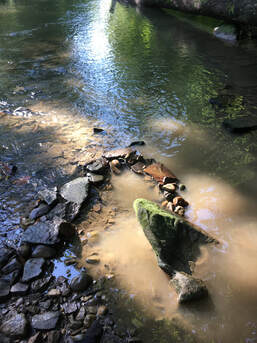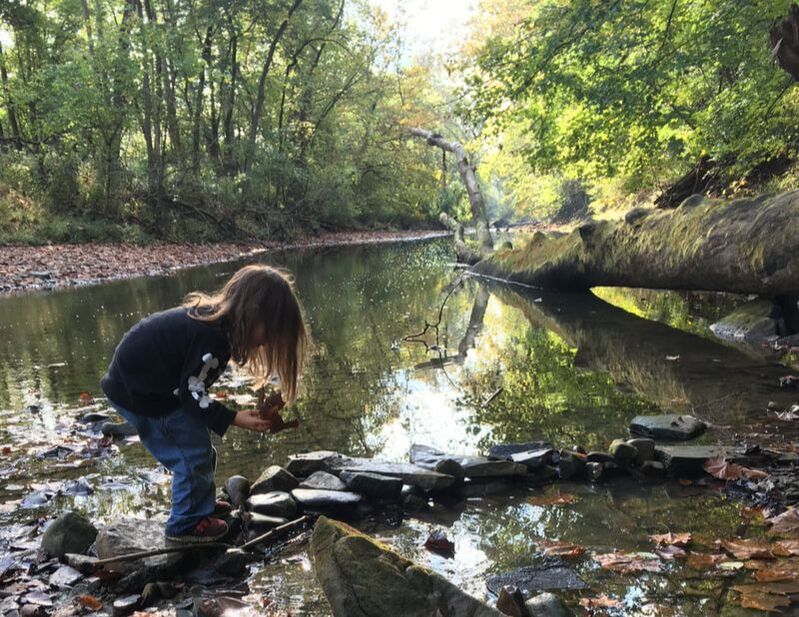|
My annotated bibliography focuses on how various educational theories work in our particular homeschool setting in order to document, or map out, our educational journey. Walker, S. (2001). Teaching Meaning in Artmaking. Worcester, MA: Davis Publications. Following my Unschooled post, I asked a couple of educators at church about play in education. I have been, for some time, mulling over the question: How do I (as an educator) help my children transition from early childhood into more independent learning through play?  There is a plethora of studies on the role of play in early childhood education – Montessori for example and much of the support for unschooling. There is also a body focused on student-led inquiry (Project Based Learning among others). And, one of my favorites in art education is play and teaching meaning making through artmaking. But, there seems to be a lack of support from moving from all the forms of play in early elementary to a focus on 4th grade and up. What about those in between years, when kids are starting to read, still have the urge to play. How do you cultivate a playfulness in learning when it starts to take different forms? How do you work with kids who are at one moment still small children and at others more mature, independent ones? I asked one of my graduate school professors, Dr. Walker this same question (truth be told, I’ve asked a number of former professors), and she saw the question as one of child development. And through that lens, I’m guessing there is quite a bit of research. That is, of course, part of it, but in my mind, it is a process-based question. Maybe. I took a look at PBL after my conversation at church per their recommendation, and the framework is solid. I love the idea of structuring projects around a guiding question. It has, in fact, helped me structure our most recent project on Ancient Greece in which we're looking at the question, What gifts did the Ancient Greeks give us? It is broader, however, than similar processes in arts education, which I find to be most comfortable. Most directly connected, I think, is the idea of teaching meaning through artmaking. Sydney Walker has a wonderful book on this very thing. In it, she describes the artmaking process as including big ideas, problem solving, acquiring and drawing from a knowledge base, personal connections, boundaries (formal, technical, media, style, subject), and ways of working (risk taking, playing, experimenting, delaying closure). As the introduction to the book summarizes so well, “Walker emphasizes the need to help students construct meaning through the exploration of what she calls “big ideas.” She notes that artists rarely proceed by making one conceptually isolated product after another. Instead, they grapple with broad, important issues, ideas, and questions through a series of explorations. They tend to probe these ideas at increasingly deeper levels, asking new questions and acquiring more knowledge in the process. Their search is personal and is often informed by research. They create problems and challenge themselves to address them within self-imposed boundaries” (Stewart in Walker, 2001, p. v). I love this book. It presents ways to integrate the ideas into the classroom with so many curriculum ideas, resources, a starter list of big ideas and the artists, concepts and questions that could be employed. But more importantly is that the ideas presented in this book are supported with research among education students, who are practicing what Walker is preaching successfully, and not so successfully. The examples of failure, what doesn’t work, are for me just as valuable as the examples of what works. For example, in discussing one student’s application of artist, Andy Goldsworthy, in an artmaking activity, the student missed the point. The student had designed an activity in which they brought in a variety of natural materials (like Goldsworthy used) for the others to create personal containers. But, rather than engaging with Goldsworthy’s big idea, this activity only addressed superficial aspects of the work and left those engaging in the activity with little personal connection and depth of understanding. I’ve been thinking of this example quite a bit. About a month ago, the kids and I read the book, “The Secret Kingdom” about the artist Nek Chand. It’s an amazing story really – as a young boy, Chand was forced to leave his home in Pakistan during the partitian and moved to Chandigarh. From a rural village filled with stories to a concrete city. He discovered an undeveloped plot of land and began crafting for himself a new home, recreating the stories of his boyhood home. This work at once engages the history, politics, and culture of a region, in addition to technical skills, different art forms, and is rich with personal connections. We loved the idea of creating a secret garden, and began thinking of where we could do it. The backyard of our apartment. The creek by the bike trail. This project has been on hold for several weeks, simply because we haven’t landed on a plan or a place. In the meantime, we watched Rivers and Tides, a documentary about Andy Goldsworthy. To me, these two are connected – working with materials found in the environment in which we live and work and creating something new out of it. There are differences, yes, but the process of collecting and creating and seeing what happens seems to parallel. I am eager to take the kids back to our spot in the creek to continue building with our rocks and creating something surprising and new. A secret garden. What do my children learn when we engage in activities like this?
References: Nek Chand Foundation. https://nekchand.com/ Rosenstock, B. (2018). The Secret Kingdom: Nek Chand, a Changing India, and a Hidden World of Art. Candlewick Press. Walker, S. (2001). Teaching Meaning in Artmaking. Worcester, MA: Davis Publications. Riedelsheimer, T. (Director). (2002). Rivers and Tides: Andy Goldsworthy Working with Time. Cinefrance
0 Comments
Leave a Reply. |
Ruth M. SmithCommunity arts educator and researcher. Drinking coffee. Home educating. Making art. Listening intentionally. Categories
All
Archives
February 2022
|

 RSS Feed
RSS Feed
